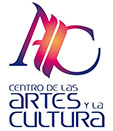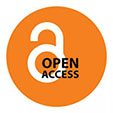About the Journal
OBJECTIVE, PUBLIC AND THEMATIC
The journal Arte, Imagen y Sonido, is a peer-reviewed journal, published every six months. It arises from the collegiate work of teachers and artists of the Benemérita Universidad Autónoma de Aguascalientes. Driven by the conviction that the convergences and divergences between different knowledge multiplies the possibilities of thinking the artistic fact, the magazine is presented as a living space of artistic documentation that opens the debate on art and its link with the contemporary Latin American world.
The objective of the magazine is to disseminate and debate, on the one hand, Latin American contemporary thought around art, and on the other hand, Latin American contemporary artistic creation.
The reception of submissions will be open throughout the year with biannual issues January-June and July-December and will remain so for subsequent continuous publications. Semi-annual issues will begin each January and July. The invitation to publish in the journal Arte, Imagen y Sonido is addressed to researchers, artists, graduate students, teachers, art producers to propose works in the following categories or sections:
- Research articles, preferably those that propose problematizing approaches to contemporary Latin American art through inter or transdisciplinary approaches (3000 to 5000 words). Author or co-authorship
- Art criticism, preferably those that focus on contemporary Latin American art practices (3000 to 5000 words). Author or co-authorship
- Academic or creative essay that discusses methodological, inter or transdisciplinary elements that emphasize the relationships between different knowledge, practices and discourses of 20th and 21st century Latin American art (3000 to 5000 words) Author or co-authorship
- Reviews of books or other publications that discuss contemporary Latin American artistic phenomena (1500 to 2000 words).
- Audiovisual essays, (video essay, videotape, gif, slideshow) The audiovisual essay should reflect on contemporary Latin American art assuming the audiovisual discourse in its development as the formal poetics. It should range from 3 to 10 minutes. If it is a little longer, its relevance will be evaluated based on quality. It will be sent in MP4 format and when it is published it will be through the Journal's YouTube and Vimeo channels.
- Interviews to producers and theoreticians of current Latin American art for documentation and dissemination purposes (from 3000 to 5000 words).
- Audiorama, (podcast, documentary record) Sound archive for the diffusion of contemporary Latin American art.
- Digital Gallery, Contemporary art pieces by Latin American artists may be submitted under the following criteria: collective author materials in traditional digital or digital media. Each work or series of no more than 10 pieces. They must have the following elements: author's statement between 500 to 700 words, technical data sheet of each piece, image quality not less than 300 dpi, 44.1 khz or 1080p, visual format in JPG or TIFF and GIFF, audio format in .WAV or .AIFF and video format in .MOV or .MP4.
Entries will be received on the magazine's website. In the submissions button.
Submissions should have the following characteristics:
(a) The file name in WORD should follow the format: first last name, second last name and first names.
E.g. LopezOsunaAna.docx
b) You must attach your personal ORCID information.
c) The file should include the ABSTRACT or SUMMARY, in Spanish and English.
d) The document should be written in Times New Roman 12 point font, upper and lower case.
e) All paragraphs should be justified and double-spaced.
f) The title should be centered in Times New Roman 14 point font, upper and lower case.
g) Under the title of the paper should be the name of the author or co-authors and, if applicable, the name of the institution of origin or affiliation and e-mail address.
h) Topics and subtopics should be aligned to the left and in bold type.
i) The margins should be 2.5 centimeters on each side.
j) Graphics and drawings accompanying written documents should be in JPG format at 300 dpi. In the case of the Digital Gallery section, they shall be submitted with the requirements described in point number nine of the sections or items.
k) It must have the length stipulated for each item previously mentioned in the editorial sessions.
l) Citations and references must be made in Chicago 17 or APA 7 style. We attach the reference manual from the official web page:
https://www.chicagomanualofstyle.org/tools_citationguide/citation-guide-1.html
https://normas-apa.org/wp-content/uploads/Guia-Normas-APA-7ma-edicion.pdf
ARBITRATION PROCESS
The period that Arte, Imagen y Sonido will have as a response from the beginning of the editorial flow to those who send their contributions will be two months.
The publication period will have two responses because it is a biannual magazine, either in the first period of the year or in the second. January-June and July-December.
The review of the papers will be both internal (by the journal's own editorial team) and external (by peer experts in the subject matter of the papers), the latter being of the DOUBLE-CIEGO type.
FREQUENCY OF PUBLICATION
Biannual. One issue is issued in the first period of each year, in the month of January, while the second issue is launched in the second period, during July.
The magazine has been published since 2021.
PLAGIARISM DETECTION
THE MAGAZINE DOES NOT PUBLISH DOCUMENTS WHICH HAVE BEEN IDENTIFIED AS PLAGIAR, THE TOOL USED IS iTHENTICATE TO DETECT SIMILARITIES IN THE TEXTS RECEIVED.
Its content must not exceed 20% similarity.
COPYRIGHT POLICY
The copyright of the articles rests with the authors, who by publishing them agree to do so under the Creative Commons Attribution-NonCommercial-NoDerivatives 4.0 International license.
OPEN ACCESS POLICY
Arte, Imagen y Sonido, is based on OJS3 which gives free access to its contents, all users can share, download, print and distribute its contents.
PUBLICATION RATES
The repositories of the journal Arte, Imagen y Sonido belong to the Benemérita Universidad Autónoma de Aguascalientes.
INTEROPERABILITY PROTOCOLS
This digital journal, being hosted and published from the Open Journal System (OJS), implements the OAI-PMH protocol (Open Archives Initiative Protocol for Metadata Harvesting), a harvesting protocol for metadata exchange based on the Dublin Core schema.
This can be checked using the OAI-MPH Validator (https://validator.oaipmh.com/), using the following URL:
OAI-PMH URL: https://revistas.uaa.mx/index.php/ais/oai
Also, it can be checked:
https://revistas.uaa.mx/index.php/ais/oai?verb=ListRecords&metadataPrefix=oai_dc
ARCHIVAL SYSTEMS
Arte Imagen y Sonido supports its publications in the digital preservation systems PKP PN, LOCKSS and CLOCKSS.
- Editorial Manifesto: https://revistas.uaa.mx/index.php/ais/gateway/lockss








